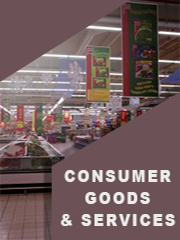Report overview
Baby food products help in fulfilling nutritional requirements of babies and help in their physical growth and development. Infant formula products are to meet the nutritional needs of babies by adding various nutrients to milk powder to achieve an effect close to breast milk.
This report aims to provide a comprehensive presentation of the global market for Baby Foods and Infant Formula, with both quantitative and qualitative analysis, to help readers develop business/growth strategies, assess the market competitive situation, analyze their position in the current marketplace, and make informed business decisions regarding Baby Foods and Infant Formula. This report contains market size and forecasts of Baby Foods and Infant Formula in global, including the following market information:
Global Baby Foods and Infant Formula Market Revenue, 2018-2023, 2024-2029, ($ millions)
Global Baby Foods and Infant Formula Market Sales, 2018-2023, 2024-2029, (K MT)
Global top five Baby Foods and Infant Formula companies in 2022 (%)
The global Baby Foods and Infant Formula market was valued at US$ 37780 million in 2022 and is projected to reach US$ 43150 million by 2029, at a CAGR of 1.9% during the forecast period. The influence of COVID-19 and the Russia-Ukraine War were considered while estimating market sizes.
The major global manufacturers of baby food and formula include Beingmate, Hipp, Mead Johnson, Arla Foods, FrieslandCampina, Morinaga Milk, Yili Group, Danone, Abbott, Nestle, China Feihe, Hero Group and Meiji, etc., which are mainly distributed in Europe, North America, China and Japan, accounting for more than 60% of the market share. The world's largest consumer region is the Asia-Pacific region, which accounts for half of the market, followed by Europe and North America at 22 and 16 per cent, respectively.
Baby Foods and Infant Formula includes Milk Formula and Infant Complementary Foods, Milk Formula occupies the main market share. Among them, A2 Infant Formulas is the closest natural formula, so it is also widely favored by consumers. In 2019, it occupied 4% of the entire market.
The sales of Baby Foods and Infant Formula are mainly carried out through offline channels, of which Supermarket/Hypermarket and Baby Stores account for 23% and 36% of the market respectively in 2019. However, online sales will grow rapidly in the future.
We surveyed the Baby Foods and Infant Formula manufacturers, suppliers, distributors and industry experts on this industry, involving the sales, revenue, demand, price change, product type, recent development and plan, industry trends, drivers, challenges, obstacles, and potential risks.
Total Market by Segment:
Global Baby Foods and Infant Formula Market, by Type, 2018-2023, 2024-2029 ($ Millions) & (K MT)
Global Baby Foods and Infant Formula Market Segment Percentages, by Type, 2022 (%)
Milk Formula
A2 Infant Formulas
Infant Complementary Foods
Global Baby Foods and Infant Formula Market, by Sales Channel, 2018-2023, 2024-2029 ($ Millions) & (K MT)
Global Baby Foods and Infant Formula Market Segment Percentages, by Sales Channel, 2022 (%)
Offline Retail
E-Commerce
Global Baby Foods and Infant Formula Market, By Region and Country, 2018-2023, 2024-2029 ($ Millions) & (K MT)
Global Baby Foods and Infant Formula Market Segment Percentages, By Region and Country, 2022 (%)
North America
US
Canada
Mexico
Europe
Germany
France
U.K.
Italy
Russia
Nordic Countries
Benelux
Rest of Europe
Asia
China
Japan
South Korea
Southeast Asia
India
Rest of Asia
South America
Brazil
Argentina
Rest of South America
Middle East & Africa
Turkey
Israel
Saudi Arabia
UAE
Rest of Middle East & Africa
Competitor Analysis
The report also provides analysis of leading market participants including:
Key companies Baby Foods and Infant Formula revenues in global market, 2018-2023 (Estimated), ($ millions)
Key companies Baby Foods and Infant Formula revenues share in global market, 2022 (%)
Key companies Baby Foods and Infant Formula sales in global market, 2018-2023 (Estimated), (K MT)
Key companies Baby Foods and Infant Formula sales share in global market, 2022 (%)
Further, the report presents profiles of competitors in the market, key players include:
Beingmate
HiPP
Mead Johnson
Arla Foods
FrieslandCampina
Morinaga Milk
Yili Group
Danone
Abbott
Nestle
China Feihe
Hero Group
Meiji
Outline of Major Chapters:
Chapter 1: Introduces the definition of Baby Foods and Infant Formula, market overview.
Chapter 2: Global Baby Foods and Infant Formula market size in revenue and volume.
Chapter 3: Detailed analysis of Baby Foods and Infant Formula manufacturers competitive landscape, price, sales and revenue market share, latest development plan, merger, and acquisition information, etc.
Chapter 4: Provides the analysis of various market segments by type, covering the market size and development potential of each market segment, to help readers find the blue ocean market in different market segments.
Chapter 5: Provides the analysis of various market segments by sales channel, covering the market size and development potential of each market segment, to help readers find the blue ocean market in different downstream markets.
Chapter 6: Sales of Baby Foods and Infant Formula in regional level and country level. It provides a quantitative analysis of the market size and development potential of each region and its main countries and introduces the market development, future development prospects, market space of each country in the world.
Chapter 7: Provides profiles of key players, introducing the basic situation of the main companies in the market in detail, including product sales, revenue, price, gross margin, product introduction, recent development, etc.
Chapter 8: Global Baby Foods and Infant Formula capacity by region & country.
Chapter 9: Introduces the market dynamics, latest developments of the market, the driving factors and restrictive factors of the market, the challenges and risks faced by manufacturers in the industry, and the analysis of relevant policies in the industry.
Chapter 10: Analysis of industrial chain, including the upstream and downstream of the industry.
Chapter 11: The main points and conclusions of the report.
